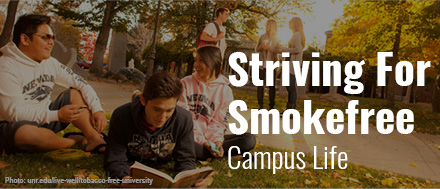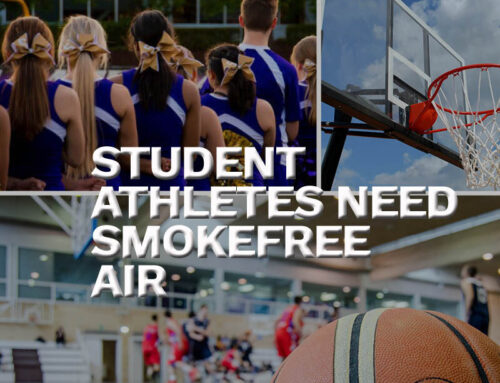5 tips to keep your student smokefree and healthy
Are you sending a young adult off to college? It can be a nerve-wracking experience to navigate. There are so many variables in getting there. Once a destination is attained, tuition and financial aid figured out, then comes the panic of moving amid the chaos of freshman orientation and housing options. One thing to consider as all this settles out: healthy living. We all want our young adult children to be safe in the college environment and not pick up unhealthy habits.
- Is the campus smokefree and tobacco-free? 100% or just partially? Read the policy and check our list to see how your campus fares. An ANR member and college student parent wrote to us: “UNM just implemented a tobacco-free policy for the entire campus, but when we visited in May, there were still designated smoking/vaping areas near various building entrances.” Alert Student Affairs or the office of the president to voice your concerns about your student’s health and safety.
- Does your student have any problems with asthma or other health concerns? If so, be very attuned to places on campus where your student may encounter smoke and be potentially triggered. Point this out to your student and map out all smoking areas so they can be avoided. A parent writes to us: “My student reported that the policy at her school showed a real lack of enforcement. In fact, campus police/security were often the ones violating the policy.” Again, we recommend that you alert Student Affairs or the office of the president to voice your concerns and ask for the smokefree policy to be enforced. Read more about enforcement here.
- Housing. If the entire campus is smokefree, this should apply to dorms and any on campus housing—but double check. Another parent gave us this tip: “During the parent meeting at orientation, ask the leadership of student affairs or student life if the campus or campus housing is truly smokefree and what their recommendations are if not. If you look for off-campus housing look for apartments that have a strong smokefree indoor and outdoor policy in place so your student won’t have to experience secondhand smoke drifting through windows from common patio areas.”
- Is there a wellness or health center on your campus? Be sure to get information on how your student will have access to help if there is a problem.
- Check to see if there are any parent groups to join on your student’s campus. A parent group can keep you connected to campus and provide a group of parents to talk to about similar issues. These connections can help you be a voice on behalf of your student if your student is overwhelmed and doesn’t know where to turn.





